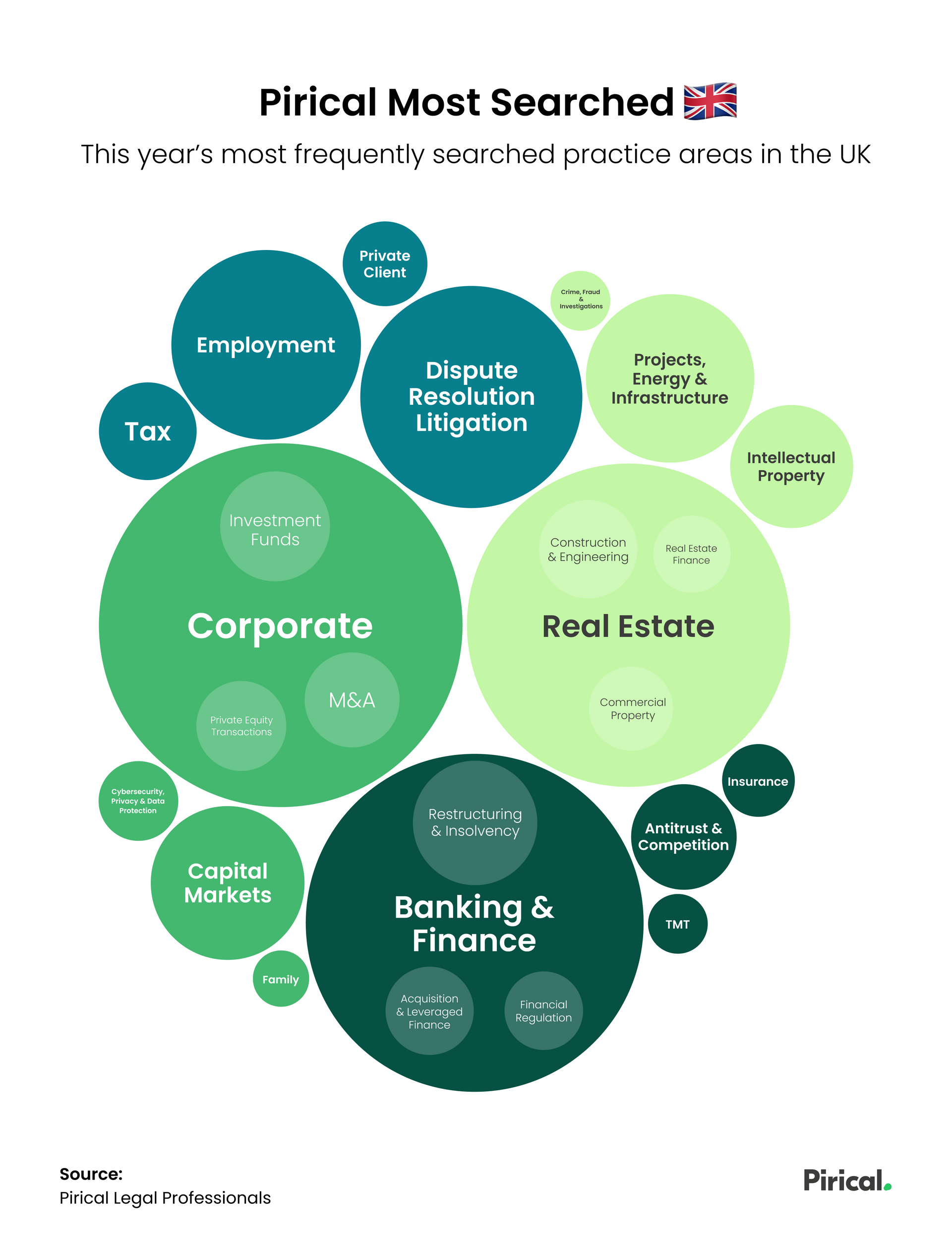How Can Law Firms Close The Gender Gap At Partnership Level?
Pirical’ Gender in the Partnership Analysis clears the path towards the 30%.
The time has come when law firms may lose business because they don’t have enough women and minorities at the senior level.
As Yahoo Finance reports, 170 GCs and Chief Legal Officers in companies such as Etsy, Heineken USA, and Mozilla have published an open letter to law firms, threatening to withdraw their business from companies who don’t show results with regards to diversity. It won’t take long before this trend reaches the UK.
So it shouldn’t come as a surprise that if you are in charge of talent or diversity at a law firm, one of the things keeping you up at night is the issue of equal opportunity for men and women. You want to make sure your company enables anyone, irrespective of their gender or minority background, to thrive at your firm and add value to your clients.
Yet, despite decades of good intentions, 30% female representation at the partnership level is still a remote pipe dream for all but a handful of law firms.
And so most firms want to at least ensure they are on the right path and stack up well against their competitors. But can they know how they stack up? Static snapshots of data, such as percentages of female partners in law firms, are not too difficult to come by, especially if you use our Legal Search Engine Pirical Legal Professionals .
However, questions such as
-
How has the proportion of women in the partnership been changing over time, and how does it fare against the industry?
-
What is our trajectory, and will we achieve our targets?; and
-
Where precisely are the issues, and what kind of improvement can we expect to see if we address these issues?
are usually trickier to pin down.
We at Pirical have made it our mission to provide evidence and clarity in a world of assumptions and ambiguity.
And so we created the Gender in the Partnership Analysis — a beautiful piece of data analytics that not only uncovers details about a firm’s state of gender diversity, but also shows which levers have the potential to effect the greatest change.
Using your in-house data including hiring, promotion, and attrition stats, overlaid with our publicly sourced data, we are able to put together a customised analysis that answers your toughest questions. Let’s take a look at a few highlights in the analysis we recently ran for one of our clients. Below is an excerpt from a recent client project we have anonymised.
The current state
First, we look at a firm’s starting point. In this example, 16.4% of the firm’s partnership are women, which has been increasing consistently over the past 4 years.
Figure 1: % women in the partnership over time
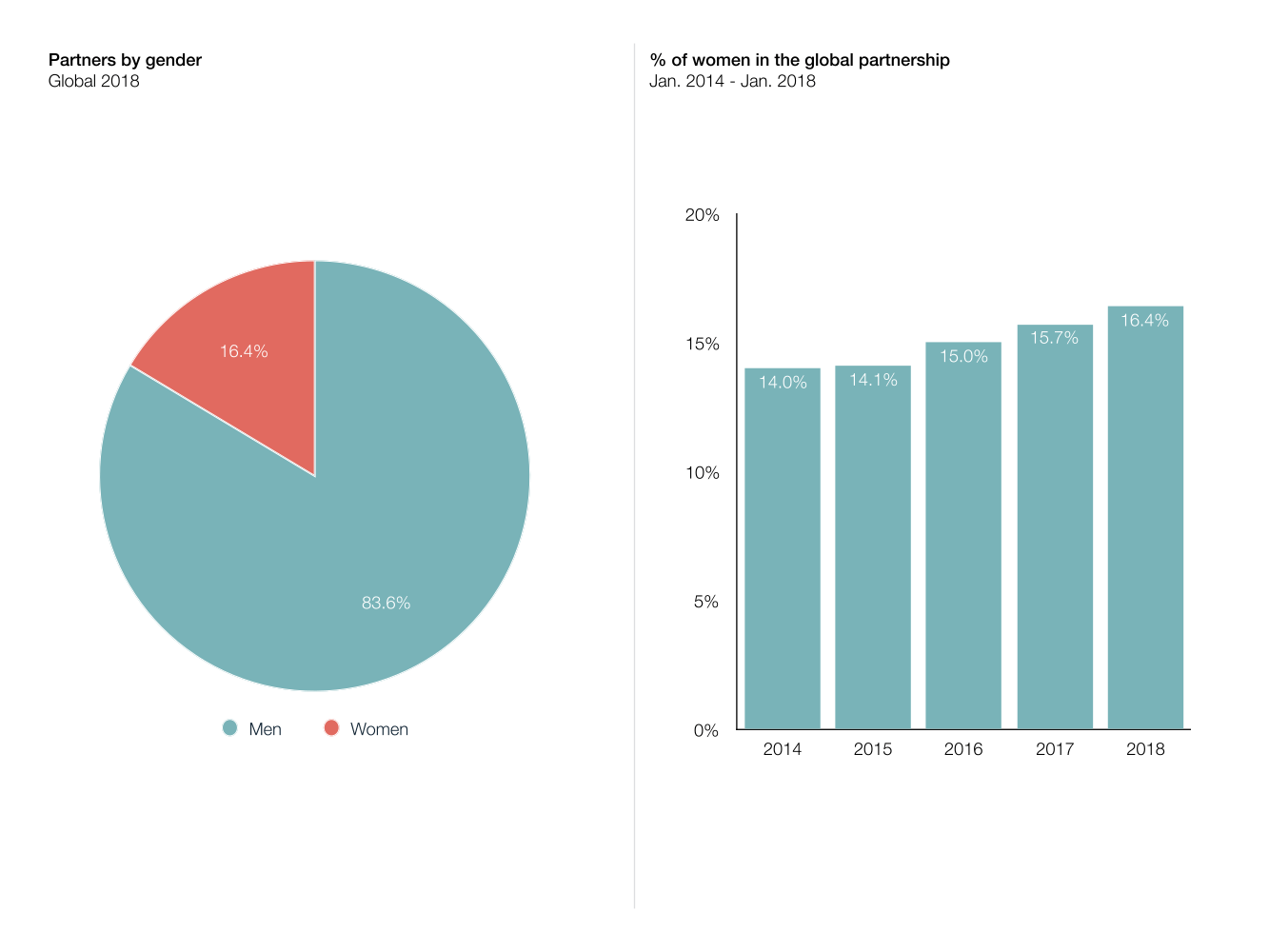
To understand how the firm got to its current state, we break down the changes into three components:
-
Attrition - How many women left the partnership
-
Lateral recruitment - How many women were hired directly into the partnership, and
-
Promotions - How many women were promoted into the partnership
Attrition
Many people we speak to believe that the percentage of women in their partnership is low because women have higher attrition levels compared to men. Some cite anecdotal reasons such as better work-life balance, discrimination issues, or family choices. But what does the data say?
Figure 2: Attrition levels of men and women across different roles
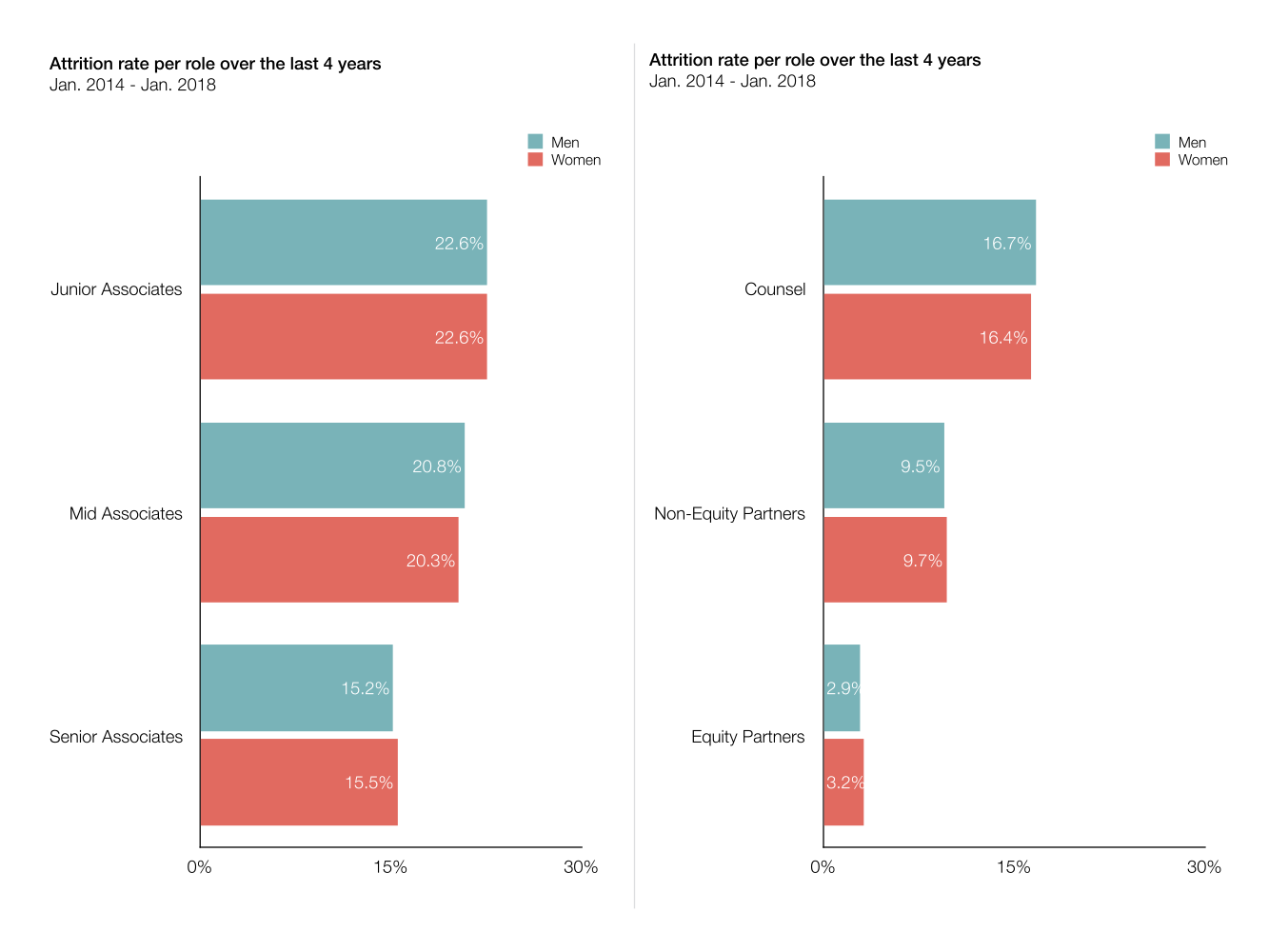
Contrary to commonly held beliefs, women (at this firm) are not leaving at a higher rate than men. Hence, attrition rates do not explain why this firm has low levels of women in their partnership.
Laterally hired partners
One of the most popular (and sometimes slightly dreaded) pieces of analysis is the question “how do we stack up against competitors?”. Here, we not only rank our client in terms of their current level of female representation, but also their competitors. We then look at the rate they hire at and how it stacks up against their competition.
Figure 3: % of women partners hired and % of women partners across competitors
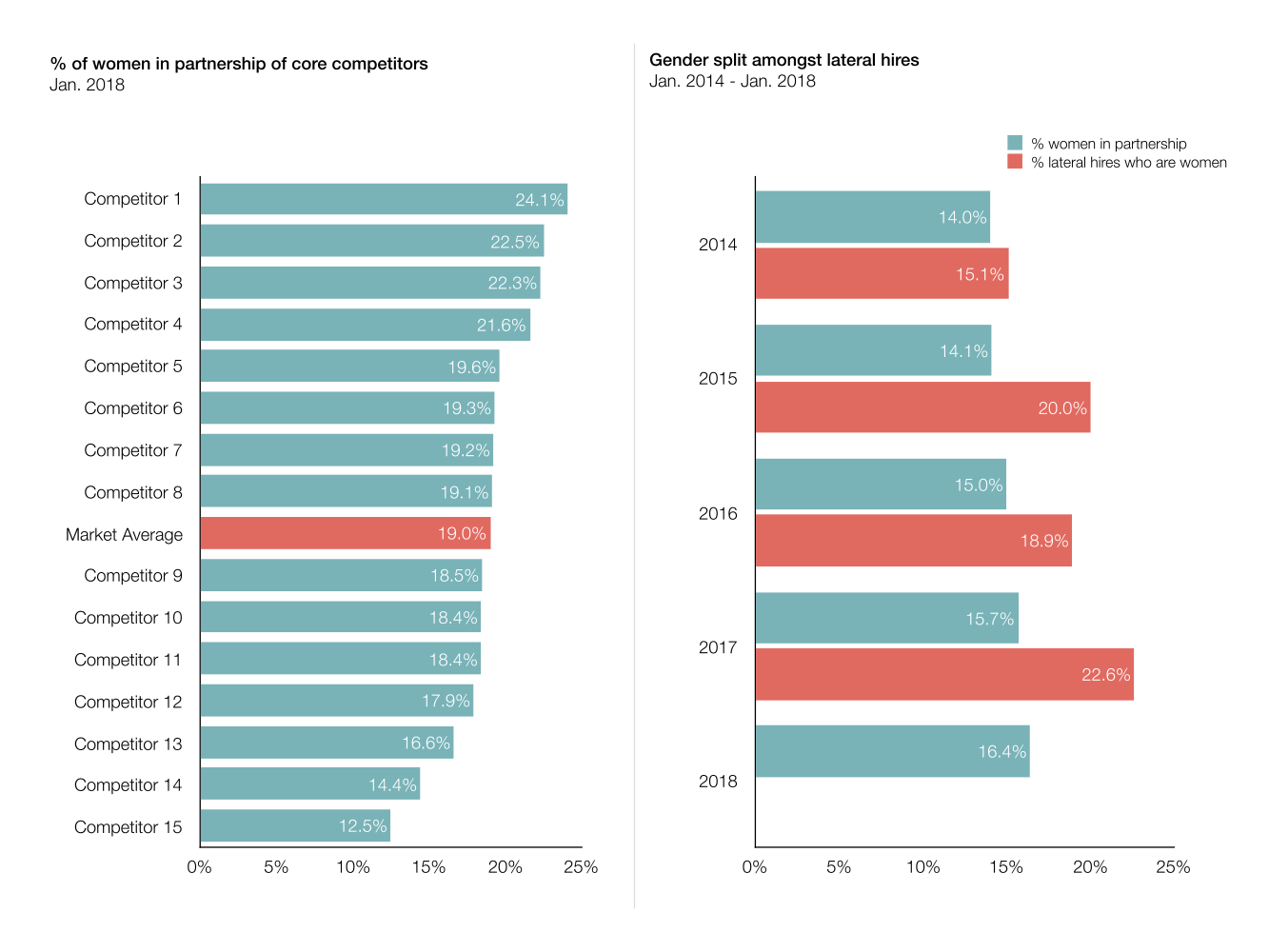
A hiring rate into partnership that’s higher than the existing ratio of female partners means that the firm is on a good path towards reducing the imbalance within the firm’s partnership. The firm in this example is quite consistently hiring more women partners than there are in the firm — which means recruitment is contributing to increasing the percentage.
In addition, when we compare this law firm’s hiring rate with its competitors, we conclude that they are hiring at market rates. Continuing to hiring at this rate will further improve their statistics.
Promotions
Then we take a look at a firm’s current hiring and promotion practices, e.g. at what rates are men being promoted more than women.
Figure 4: Promotion rates and senior associate population
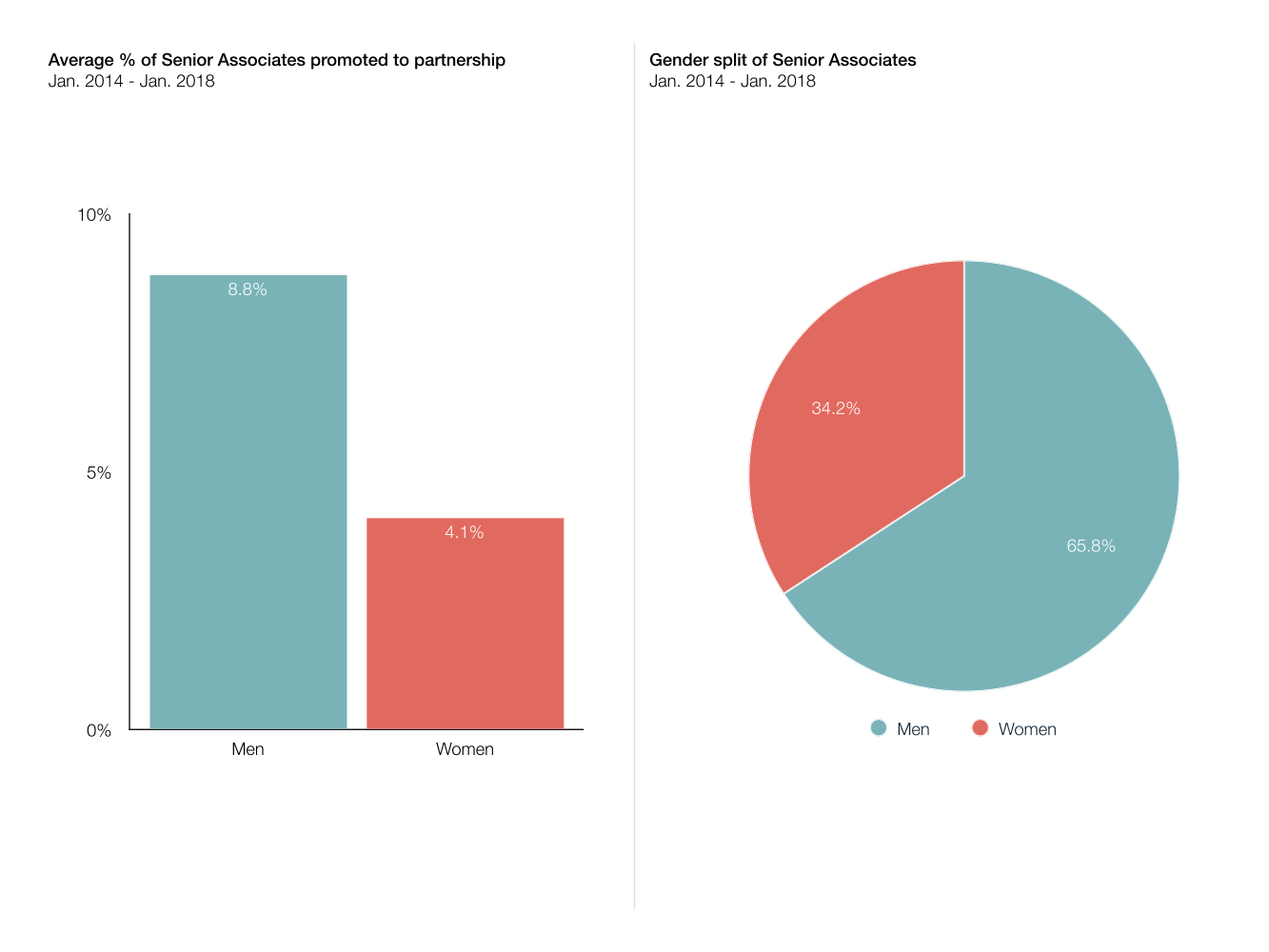
Not only do we see women are promoted at half the rate of men, we also find that the Senior Associate population is skewed in favour of men. In other words, this firm is being hit twice - promotion rates of women is half that of men, and there is a smaller proportion of women to promote from.
These insights usually garner the biggest interest among law firms because they make a vaguely defined problem more specific and actionable. Clearly defining the issue is the first step towards a solution.
Forecasting the impact
We now know that promotion rates and senior associate pipeline are the two main issues for this firm, but before we devise a strategy, we need to know what impact they could achieve if these issues were resolved. This will help concentrate and prioritise the efforts.
Specifically, what would happen if this firm were able to promote women at the same rate as men? What would happen if they were able to promote women at the same rate AND balance out their senior associates?
Figure 5: Projections if promotion rates were equalised and senior associate population was equalised.
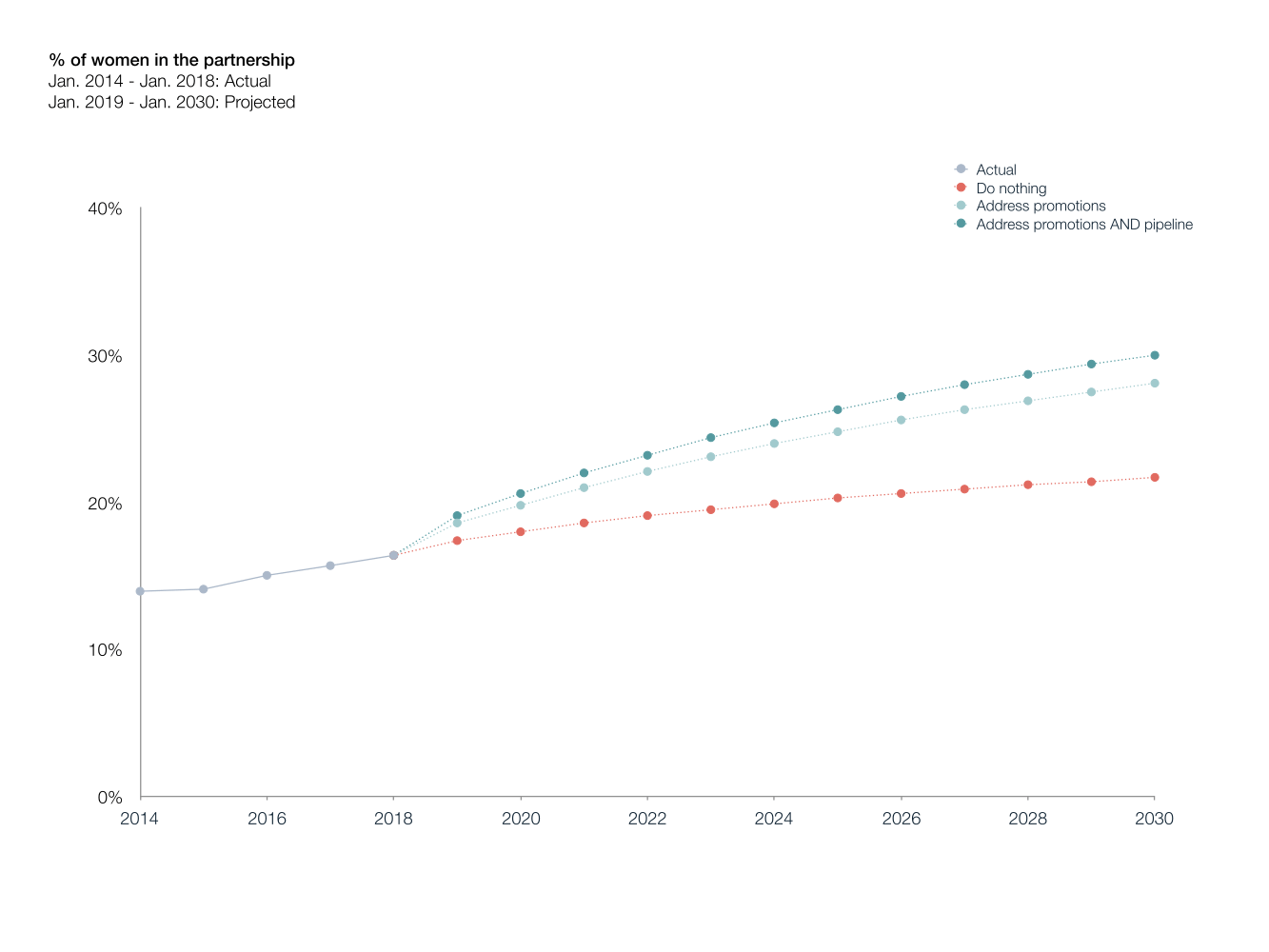
Results?
A benefit of using the Gender in the Partnership Analysis year-on-year is that you can measure your progress versus the ambition you have set the year before. A full 12 months later, we revisited this firm to see how they’ve done. Overall, they saw a net increase of women in their partnership by 2% - nearly the same increase over the 4 years prior combined!
How did they do it?
The combination of dynamic data points allows us to issue recommendations by practice area and at company level — specific actions for each area in the firm.
The example below shows that Practice 15 has plenty of women in the Senior Associate position, so their problem is not their hiring pipeline of junior and mid-level staff. However, they have been promoting more men from Senior Associate to Partner level. They should look into whether there are any structural biases that place women at a disadvantage in the promotion process, or that discourage them for applying for promotions in the first place.
Figure 6:
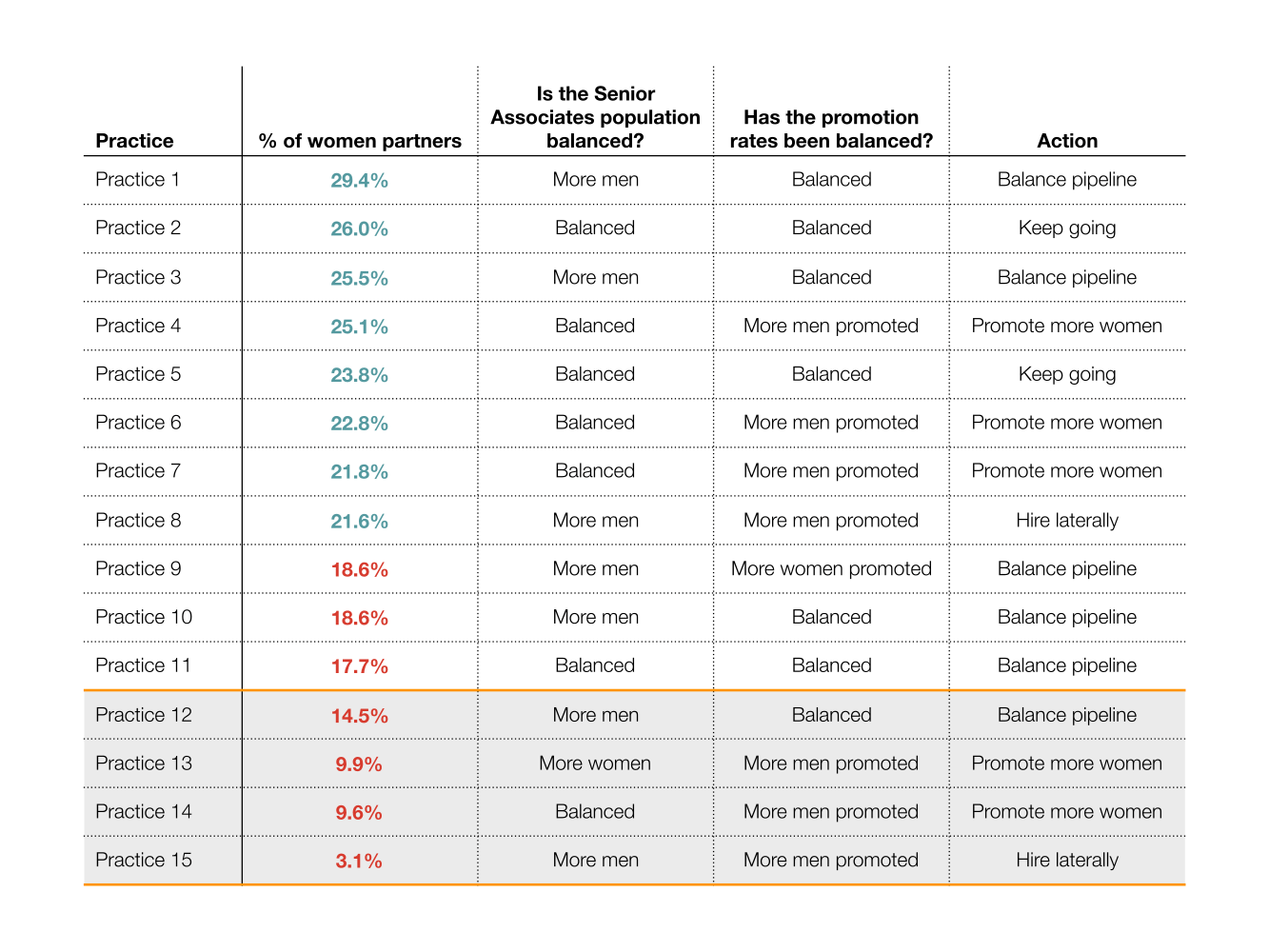
The results: Insight and an action plan
The client who received this particular analysis called it “extremely helpful”, discussed it at board level, and pointed out that it allows them to focus on the areas where most work is needed. They underscored this statement by recently promoting a female senior associate into a partnership position.
What would you action if you had this data for your firm?
The Gender in the Partnership Analysis is available to all law firms who are committed to gender diversity.
Once we have all NDAs in place, it takes 1-2 days to let our algorithms loose on your databases. 1-2 weeks later, we will be able to present to you your own customised analysis, including specific action items for you to work on.
Contact us here and schedule a call to discuss whether the Gender in Partnership Analysis is the right solution for you.
Subscribe to the latest data insights & blog updates
Fresh, original content for Law Firms and Legal Recruiters interested in data, diversity & inclusion, legal market insights, recruitment, and legal practice management.
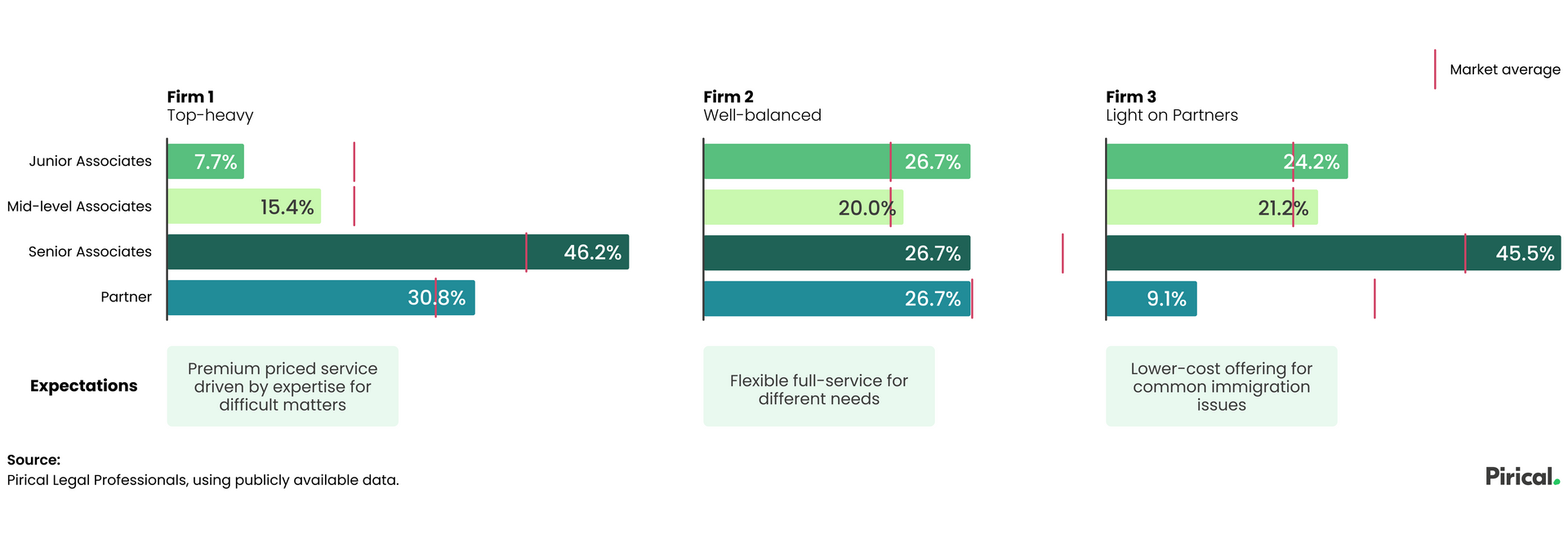
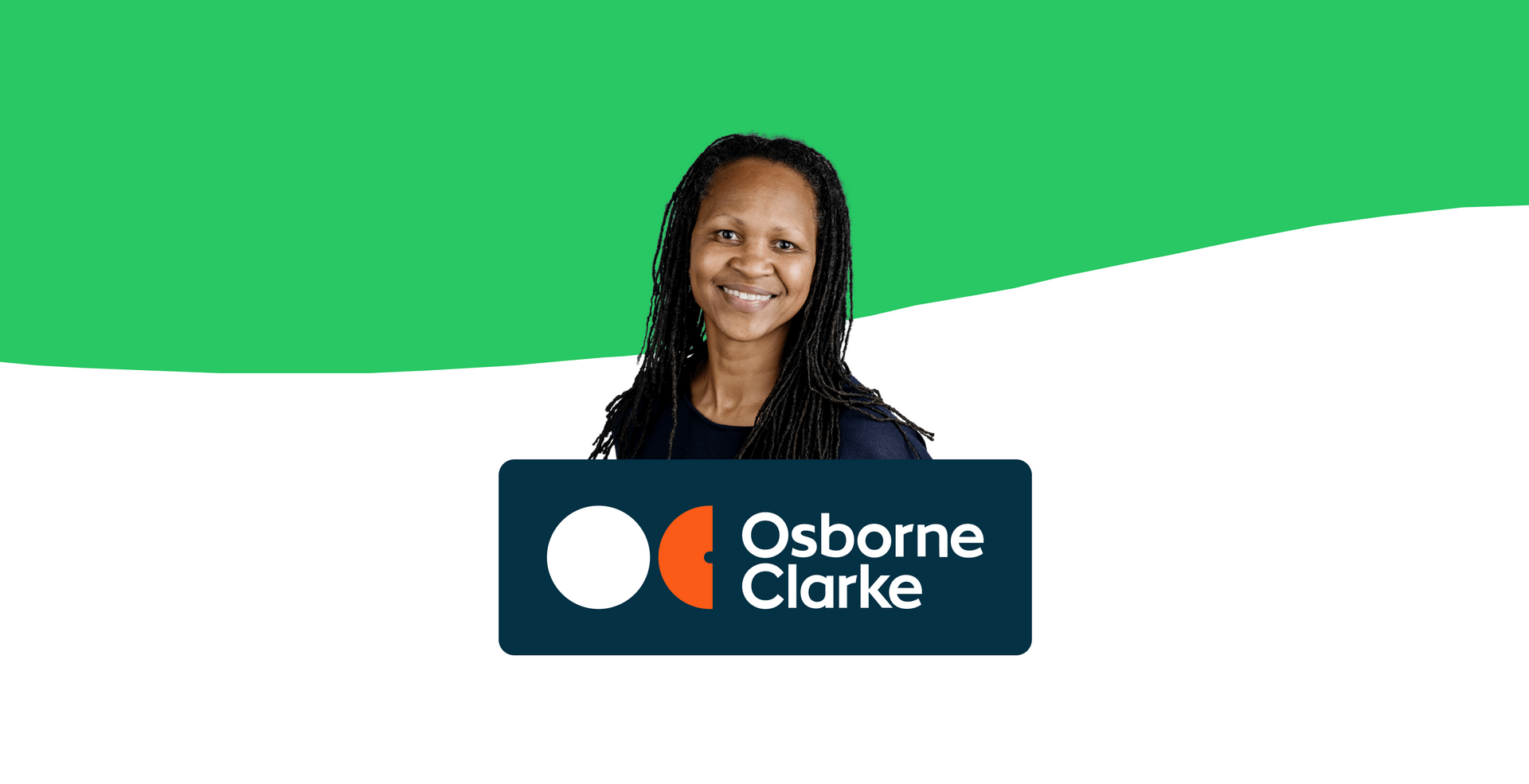
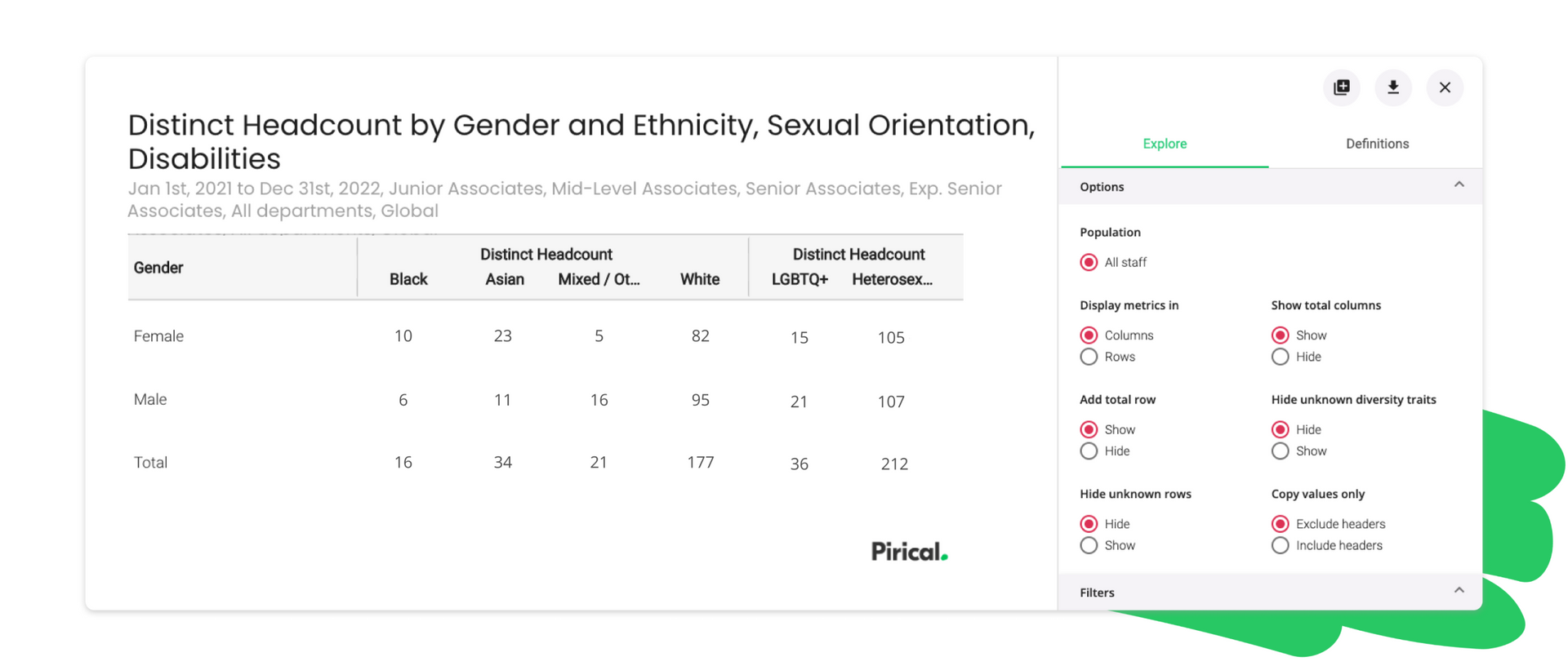
Products
Pirical
81 Paul Street
EC2A 4NQ
info@pirical.com
Copyright Pirical
2024
Certified by
Cyber Essentials Plus

